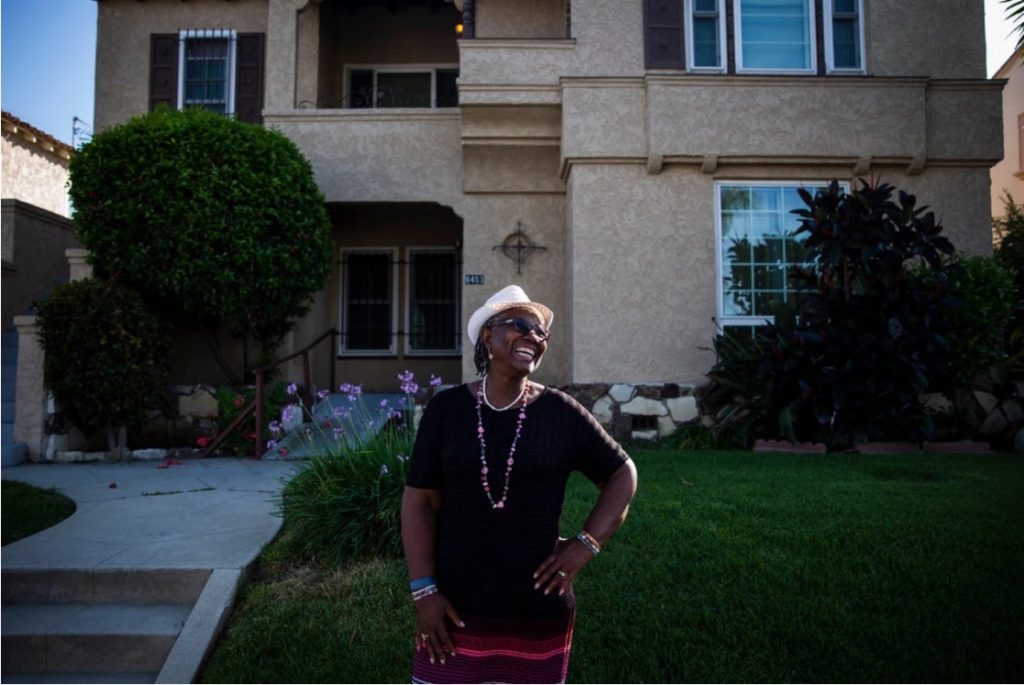Savers who want to build their nest eggs without relying solely on the stock market have other options. The pandemic is testing their skills.

June 20, 2020
By JOSHUA BROCKMAN
Audrey Smith knows what’s it like to plant a seed and watch it grow. One of 11 children, she worked in the fields of her family’s farm in Texarkana, Ark., and ate vegetables they grew.
But Ms. Smith didn’t want to farm for a living. So she attended college and moved to California for graduate school to become a registered dietitian. For 41 years, she worked her way up the ladder at Watts Healthcare, a health maintenance organization, until she retired nearly three years ago as the director of preventive health services.
Along the way, she raised a family, became a real estate agent and started planning for retirement in her 30s by investing primarily in real estate, taking a route to building her savings that is somewhat off the beaten path.
Instead of relying on financial advisers or Wall Street’s standard fare, some retirement investors build their nest egg by creating their own investment portfolio. Their main revenue source may be residential or commercial real estate, businesses or even precious metals. It’s not unusual for these investors to hold some mutual funds, equities or bonds, but those are secondary.
Even during the best of times, investing in alternative holdings often requires grit, stamina and some elbow grease. Still, anything can lose value. Leading up to the 2008 financial crisis, homeowners and investors thought prices would never fall — but the market imploded. During the coronavirus pandemic, with a volatile stock market and the U.S. economy in a deep recession, people remain concerned about whether their longstanding investment strategies and assumptions will see them through.
“I used to tell my parents and family that I was not going to be poor when I grew up,” said Ms. Smith, 72, who lives in Inglewood, Calif. “This motivated me to invest in income properties and stocks.”
For the past four decades, she has built a retirement portfolio that includes seven apartment buildings with 15 units that she owns and manages. About half of these, she said, are Section 8 properties, where low-income tenants receive federal housing assistance. This guarantees her some rental income and could help mitigate any loss of rent from other tenants affected by the pandemic. (Ms. Smith said that so far, only two of her tenants had difficulty paying rent.)
The strength of the housing market in Los Angeles has helped protect Ms. Smith’s nest egg. Over 30 years through March, residential housing prices in Los Angeles increased 194 percent, compared with 180 percent nationwide, according to the S&P CoreLogic Case-Shiller Index.
Historically, Ms. Smith said, the value of her income properties has held up because of the scarcity of rentals. “Here in California, people are always looking for a place to stay,” she said. “If you take care of your property and you’re good to your tenants, they don’t leave.”
She has structured her retirement portfolio to reflect this reality: Real estate makes up 90 percent of it. The remainder is invested in a traditional individual retirement account that she rolled over from her previous employer’s 401(k) plan.
For some savers, retirement investing relates to their pastimes. Gary Glein of Gig Harbor, Wash., a competitive bowler for much of his life, combined his passion for the sport with the opportunity to turn around failing businesses: He and his wife, Linda, became the largest owners of two bowling centers in nearby Tacoma.
Mr. Glein called the acquisitions “targets of opportunity.” But since the couple had to shut them down because of the pandemic, Tower Lanes and Paradise Lanes have each been losing up to $60,000 a month.
“Business investments are much more volatile” than certificates of deposit or bonds, said Mr. Glein, 76, who retired from running his own manufacturing company, Norcore Plastics, in 1998 after selling it to finance future acquisitions. “It’s not for the faint of heart.”

The couple started investing in income properties in the 1970s and over the last two decades have diversified their holdings with investments in the Tacoma area, including a restaurant, an office building and a small marina. Real estate and business investments like these make up nearly 42 percent of the couple’s nest egg.
To balance their strategy, the Gleins said, they also hold individual stocks and index funds, which account for about 25 percent; some traditional I.R.A.s; and a sizable cash position in C.D.s and bonds. Still, Ms. Glein said, the cumulative losses are taking a toll.
“With every passing week, it gets just a little bit scarier as to how this will all end,” she said.
In April, Mr. Glein secured three small-business loans through the federal Paycheck Protection Program to support the bowling centers and the restaurant, the Ale House Pub & Eatery. Although most of the couple’s commercial tenants have paid their rent, some have requested rent reductions, and one has gone out of business.
Economists and investment experts said real estate investment played an important role in any diversified portfolio. It “generates higher cash flow than the stock market, behaves differently than other asset classes of stocks and bonds, and is one of the few areas of investing that are highly tax efficient for the individual investor,” said Douglas Abbey, a lecturer on real estate at the Stanford Graduate School of Business.
Mr. Abbey, who has decades of experience as a real estate investor, said his first rule was to buy property with a “forever time horizon” that will endure because it’s in a good location.
“Like a good bottle of cabernet, you want real estate to get better in 20 years rather than turn to vinegar,” he added.
Residential real estate, namely apartment properties, generates the most stable return with the least risk for individual investors, even during the pandemic, he said. Everybody needs a place to live — a reality that Ms. Smith, the Los Angeles investor, has consistently encountered. But that drives up the price, which reduces the yield, Mr. Abbey added.
He said the biggest hazard for investors in income-producing real estate was “overleverage,” or taking on too much debt in a business in which downturns and recessions are a given — something the Gleins said they have been careful to avoid.
Another means of investing is through real estate investment trusts — companies that hold, manage or finance income-producing real estate — by purchasing shares on a stock exchange, in a mutual fund or in an exchange-traded fund. Equity REITs dominate this market. Some focus on apartments, office buildings, industrial warehouses and shopping centers.
Equity REITs typically generate returns that are “higher than bonds and lower than the stock market,” Mr. Abbey said. Total returns in the five- to 40-year horizon range from 5.2 percent to 11.5 percent. Through May, equity REITs were down 15.3 percent this year, while the S&P 500 was down 5 percent. But dividend yields were 4.2 percent — more than twice the yield on the S&P 500, according to Nareit, a trade group for publicly traded REITs.
While REITs have been promoted as a tool to reduce volatility in a diversified portfolio, some investment analysts remain cautious because the asset class is sensitive to interest rate changes.
Mr. Abbey described equity REITs as “boring, plodding vehicles” over all, which can be good for a retiree because of the combination of “a dividend to pay the bills and long-term appreciation.”
Beyond real estate, one asset class that has captivated investors for centuries is gold. Investors buy coins or bars, stocks of mining companies, or E.T.F. funds that invest in the shares of such companies or physical gold.
“Gold prices have increased in the last few weeks, and they have helped stabilize portfolios,” said Michele Gambera, co-head of strategic allocation with UBS Asset Management. But sometimes gold prices fluctuate even when there’s no change in market sentiment, so it’s not fail-safe.
Still, gold’s performance since late February has been similar to “a high-quality bond portfolio,” said Ben Johnson, director of global E.T.F. research for Morningstar. “Gold is playing its traditional role as a safe haven in the midst of recent market melee.”
Mr. Johnson said funds backed by physical gold, such as iShares Gold Trust and SPDR Gold Trust, provide the “purest exposure” for investors. Funds that invest in gold mining companies perform more like equities and tend to be “extremely volatile,” he said.
Jim Lowell, the editor of Fidelity Investor and the chief investment officer for Adviser Investments, an advisory firm in Newton, Mass., recently chose the Fidelity Select Gold Portfolio as a “tactical offense pick.” He said there was potential for the fund to stay elevated because of the toll the coronavirus was taking on the markets and other economic and political disruptions.
The Gleins of Gig Harbor said they felt confident that their diverse investments and cash holdings would see them through the downturn even though some of their commercial tenants might not survive.
The couple’s next move will be reopening the bowling centers in Tacoma. But first they must ensure that their staff and customers feel safe enough to go back to work or throw a strike.
Despite the risks, Ms. Glein said, her engagement with their businesses and the community surrounding these enterprises is like a “chess game” that makes her feel “much more alive and involved than many of my other retired friends.”
Read original article, which appeared on Page B5.
© The New York Times Company
